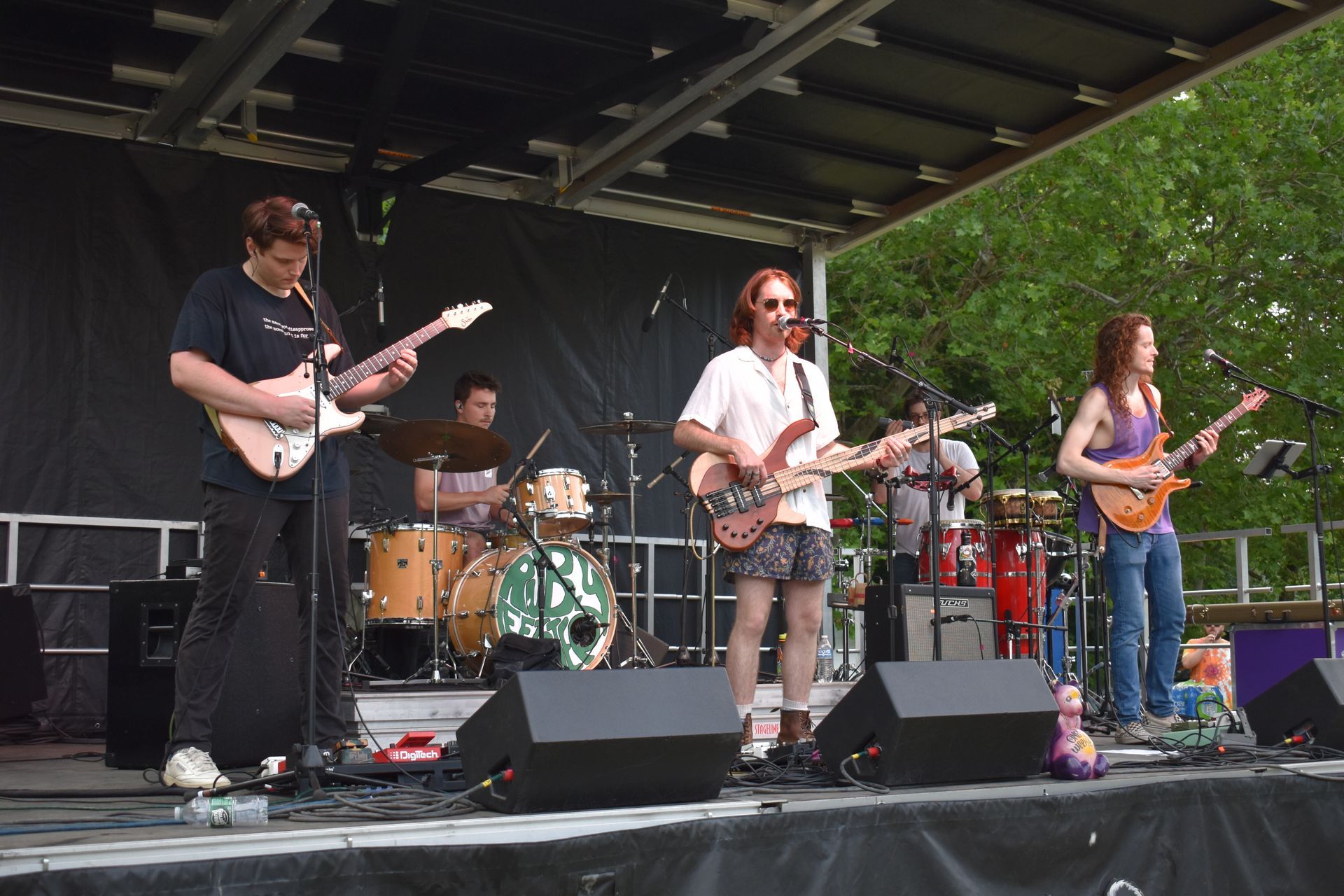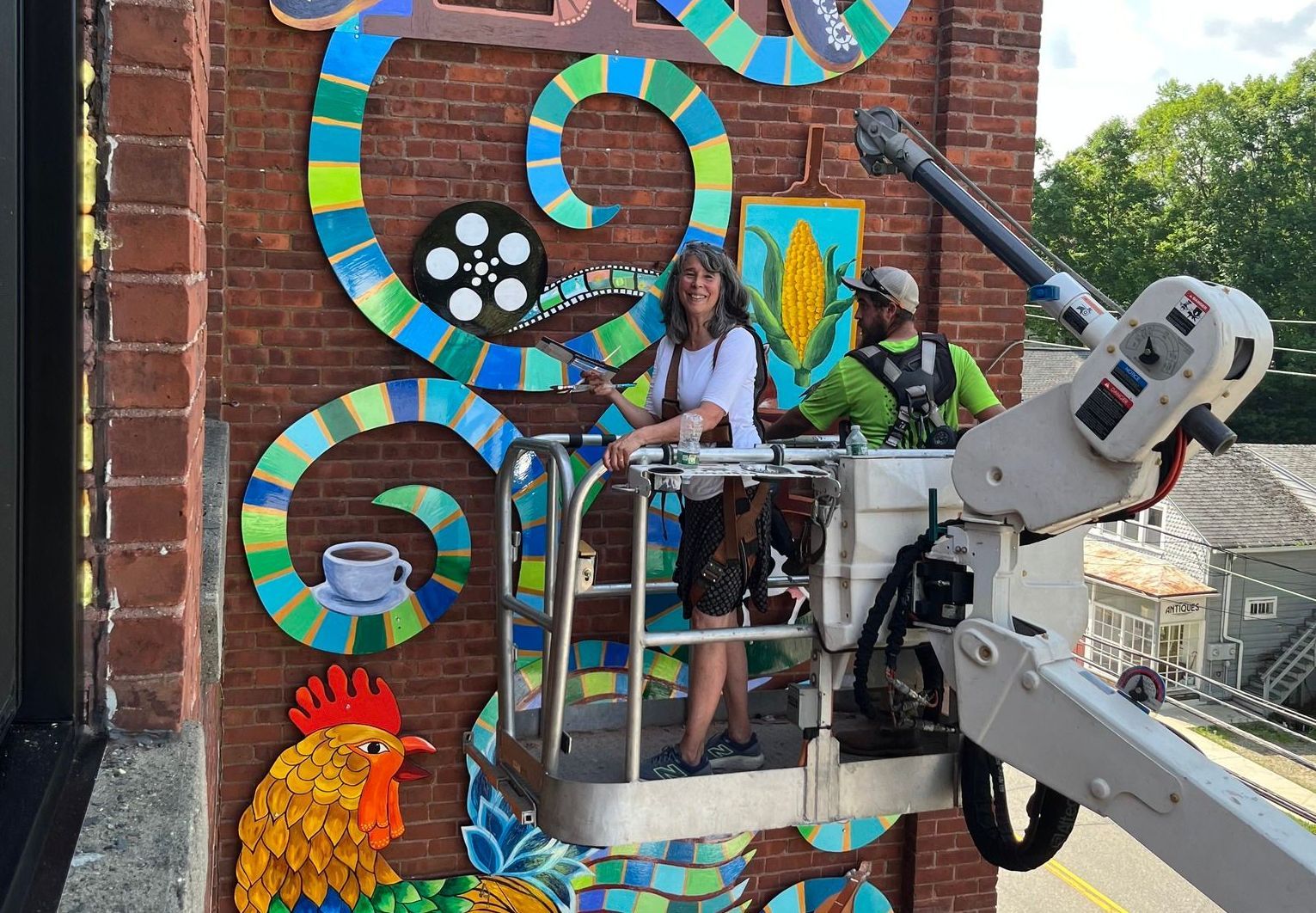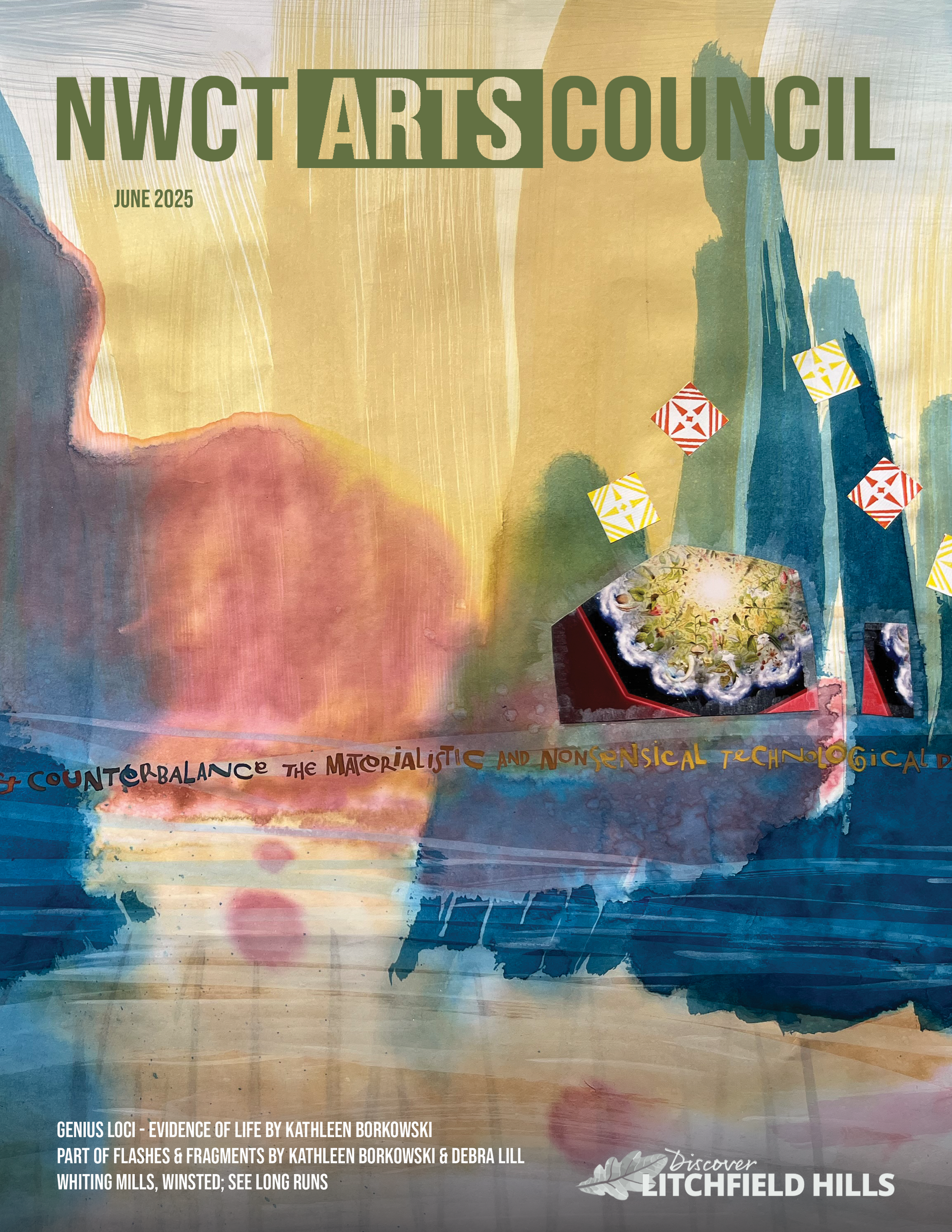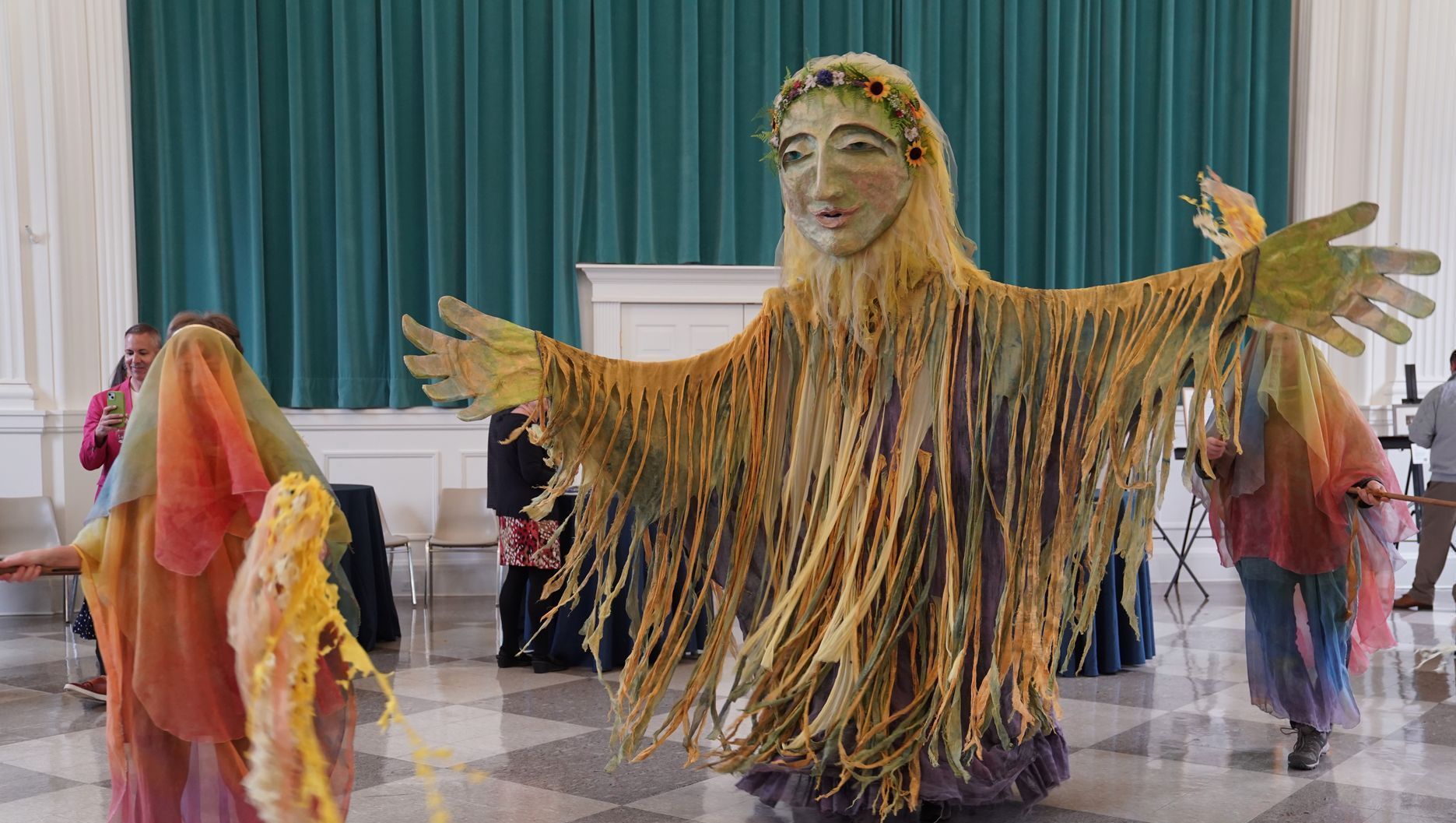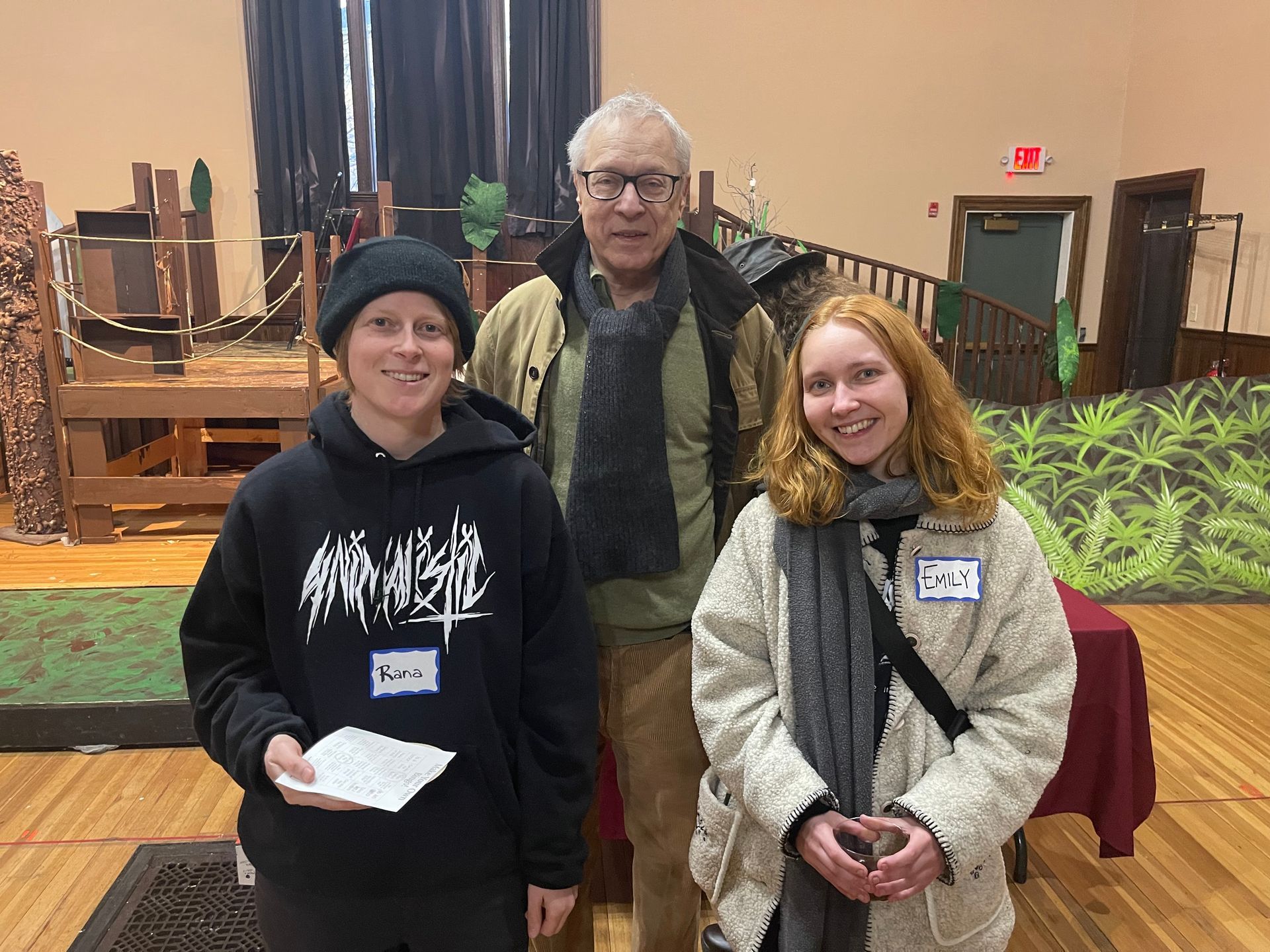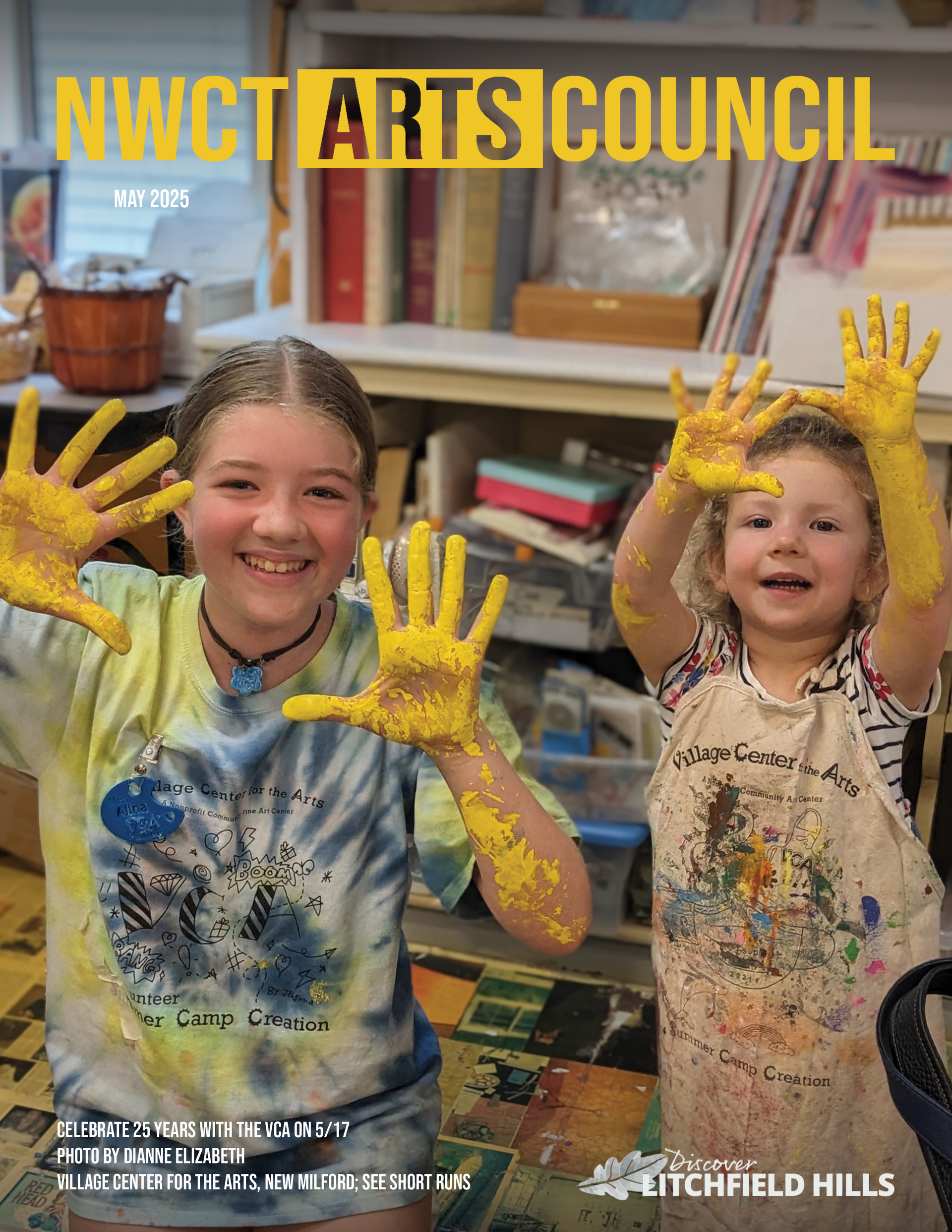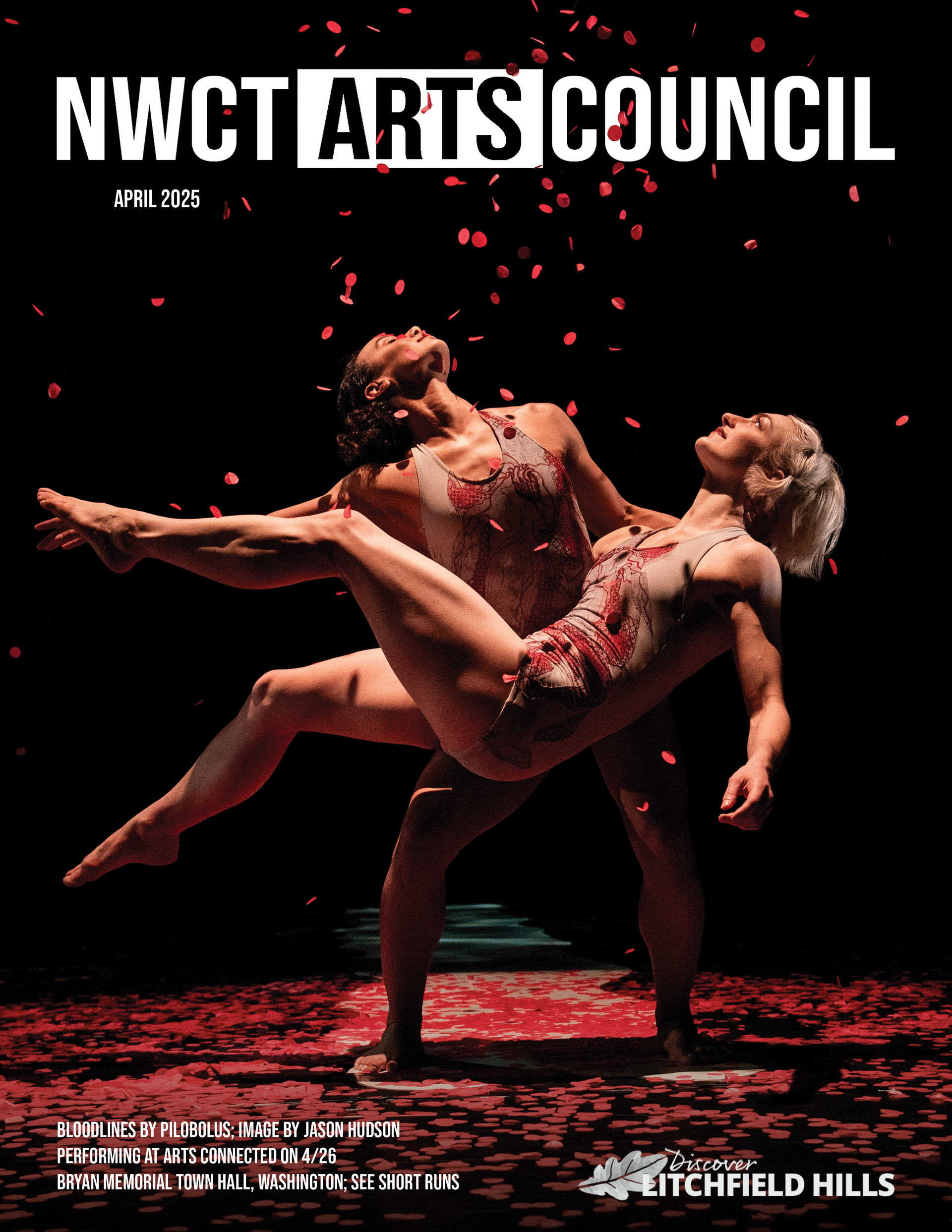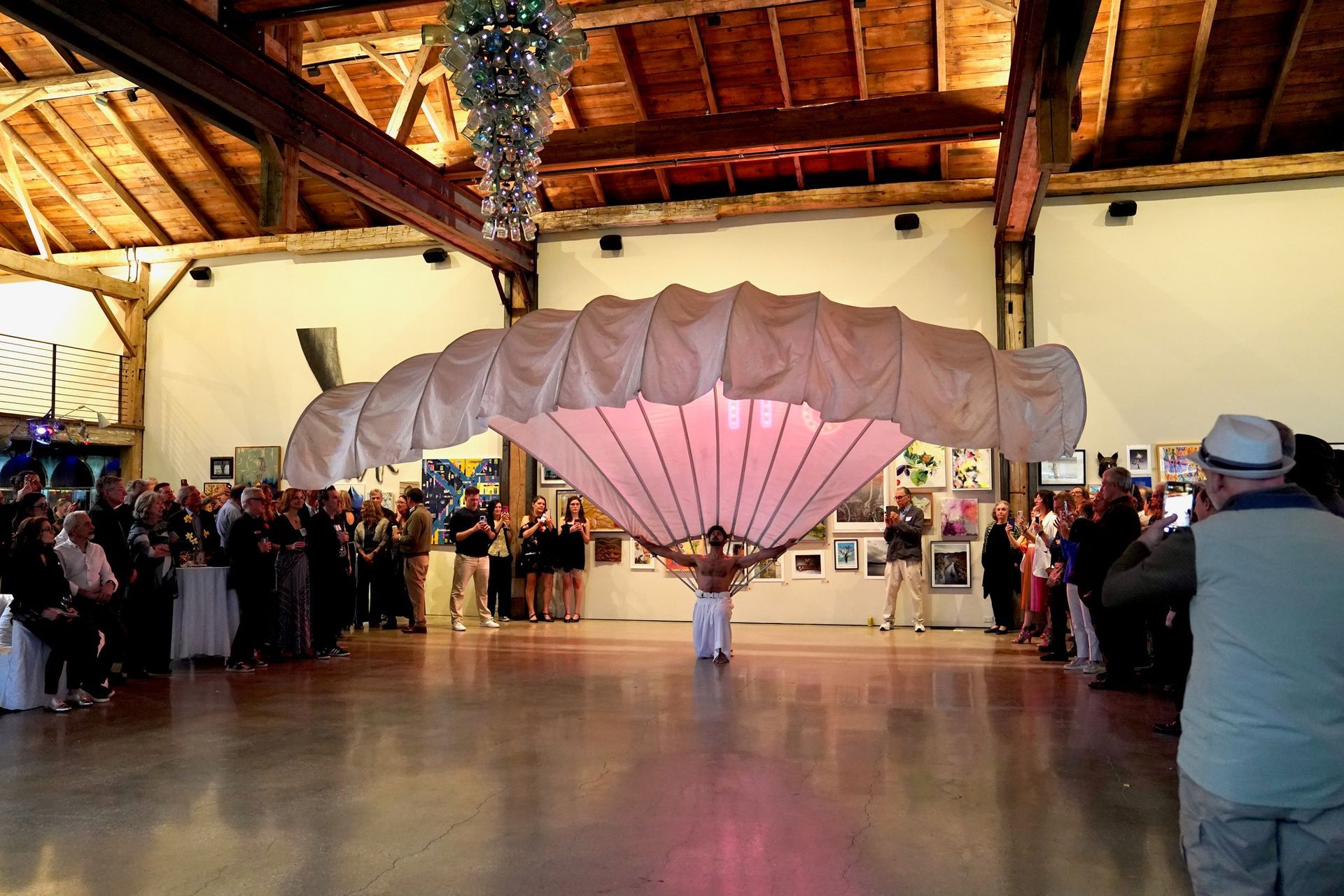The Lives of Trees: Focus on the Art of Richard Heys
“Of the places I’ve lived, the sensitivity to the forested landscape and even to individual trees is greatest in New England,” says Richard Heys.
Although a transplant to the state of Connecticut himself, Heys is certainly imbued with a great deal of that sensitivity that he ascribes to New Englanders. His interest in the life and history of his material shines through in the great variety of wooden pieces that he has produced over the years out of his studio, a small outbuilding at the top of his driveway off a quiet road in a wooded area of Litchfield.
Large windows both suffuse the studio space with natural light and allow those inside the studio to see the snowy forest just outside. Finished pieces have homes on high shelves lining the walls, while incomplete pieces still rest on tables, waiting for Heys to return his attention to them. Printed photographs of natural forms - a cuttlefish here, an orchid there - dot the walls, while a calendar from the Union of Concerned Scientists marks the date behind his desk. Piles of sawdust and carving tools are everywhere. The lathe - the tool so central to Heys’ work - sits stoically by the door, a heavy metal figure easily ignored by anyone who doesn’t know its use.

Woodturning, Heys’ craft, is a form of woodworking that primarily relies not on chisels, chainsaws, or other hand-held carving implements, but on a turning lathe, which spins the wood and allows the artist to shape the piece by cutting into it as it turns. The forms created by this technique will be familiar to anyone who has seen the curves and swells of a typical stair baluster or chair leg, but woodturning can be used for much more: boxes, vases, bowls, plates, and decorative pieces are all well within the potential of this art form.
Prior to becoming an artist, Heys spent the majority of his working life as a pharmaceutical researcher. He draws a distinct connection between this former career and his current pursuits, both in terms of the path that led him to woodturning and in terms of the imaginative capacity needed to create his pieces.
According to Heys, much of his work as a researcher involved understanding organic synthesis and being able to imagine chemical compounds in three dimensions. This long practice with three-dimensional thinking, he says, is behind his inclination towards sculptural form.
While his interest in wood and woodworking are lifelong, his actual involvement in the craft also stems from his time as a pharmaceutical researcher. He began working with wood as an “escape” from work. For Heys, the puzzle of fitting together joints to create functional pieces of furniture was a sort of play.
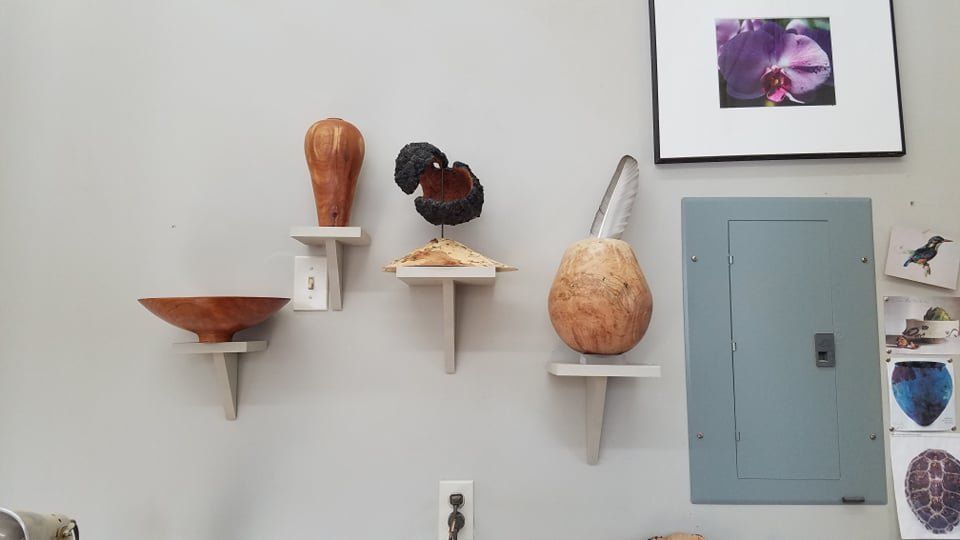
The transition from creating furniture to specializing in woodturning came later, at approximately the time when he also discovered his interest in waste wood.
After trees near power lines had to be cut back by the utility company near his home, firewood scavengers came and took most of the wood, but Heys noticed that they left behind undesirable pieces - “the gnarly bits.”
“It’s the gnarly bits that have the most interesting patterns inside,” he says.
After buying a lathe at an auction, he began using it to satisfy his curiosity about the interior of unusual pieces of wood. From there, he began creating his first woodturning pieces.
“I had a frugal sense of the value of scavenging, as well as a desire to make something interesting out of something mundane,” he explains.
Interest soon turned into a deep devotion to the craft. “One time,” he continues, “when the pressures of work were high, I found I’d been so engaged in my woodworking in the basement that hours had passed without my noticing, and I thought: how nice it would be to do this all the time.” After retiring from his previous career in 2005, he began devoting more and more time to his art, eventually building his studio next to his home.
“I still have trouble thinking of myself as an artist at all,” he admits, “because I’m just playing.”
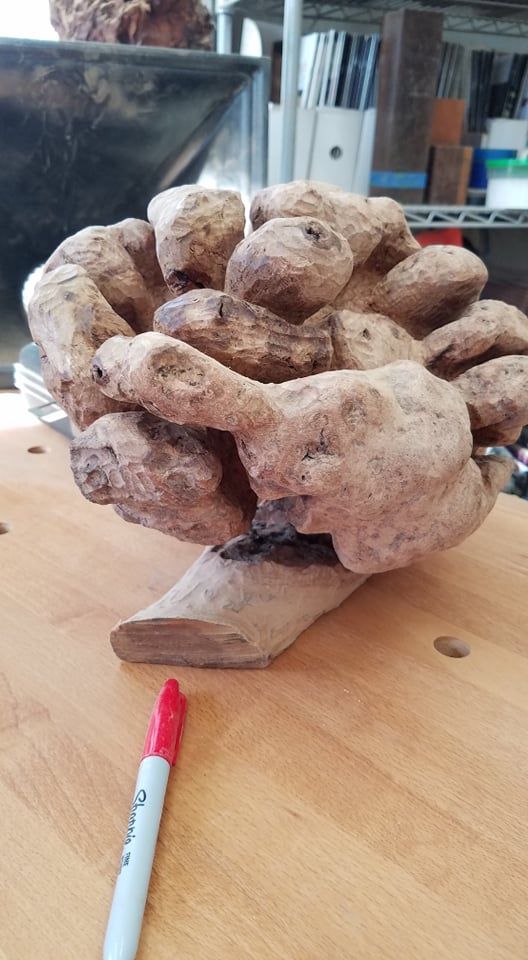
Today, Heys’ pieces especially often bear a superficial resemblance to the forms of wheel-thrown pottery, or to certain pre-pottery neolithic pieces wherein the ancient artists used the natural striations and colorations of the stone to create stripes and patterns in their vessels.
Heys similarly places high value on the natural look of the unusual pieces of wood he finds, incorporating holes, warps, and rough edges into many of his pieces. Still, he claims that his art is more of a form of exploration of the material rather than the enactment of any master vision or plan on his part.
“The first cut into a big trunk of wood is the scariest because you’re foreclosing possibilities. The more times you cut it, the more possibilities you throw away.” There’s even the possibility that there’s nothing of particular interest or beauty within a trunk at all. For Heys, it is rather a question of “looking at the wood and asking, ‘what does this want to be?’”
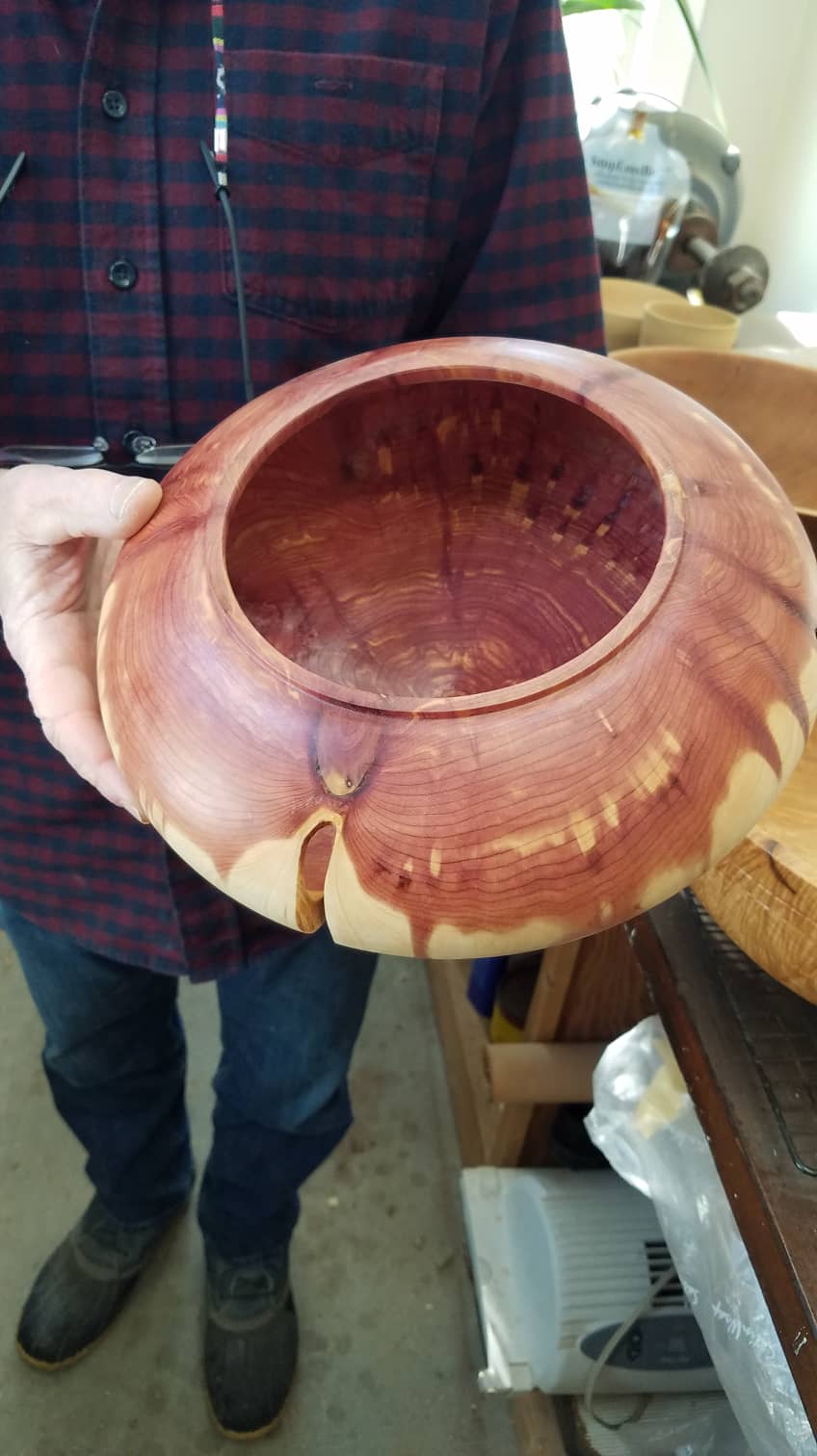
Another question also enters into Heys' work with his material: what has this been? His fascination with strange pieces and odd patterns often brings him into contact with the unusual stories that trees have to tell, such as that of a piece of a cherry tree which he acquired from a family member.
The tree, he says, had been growing on a relative’s land and had to be cut down. The relative offered the wood to Heys, who accepted. Upon cutting into the trunk, he found a healed wound in the tree, and within that wound, buckshot. By counting back the rings of the tree to the injury, he was able to find that the tree had been shot in the 1920s. “Someone probably used it as target practice,” he explains.
This isn’t the only memory that the tree contained: from his relative, he knew that the previous owners had cleared out many other trees on the property some time before. He was able to see that change in the wood as well, as after the date of the clearing, the rings of the tree became thicker as it had the sudden opportunity, in the absence of any competition, to grow far more year after year than it had before.
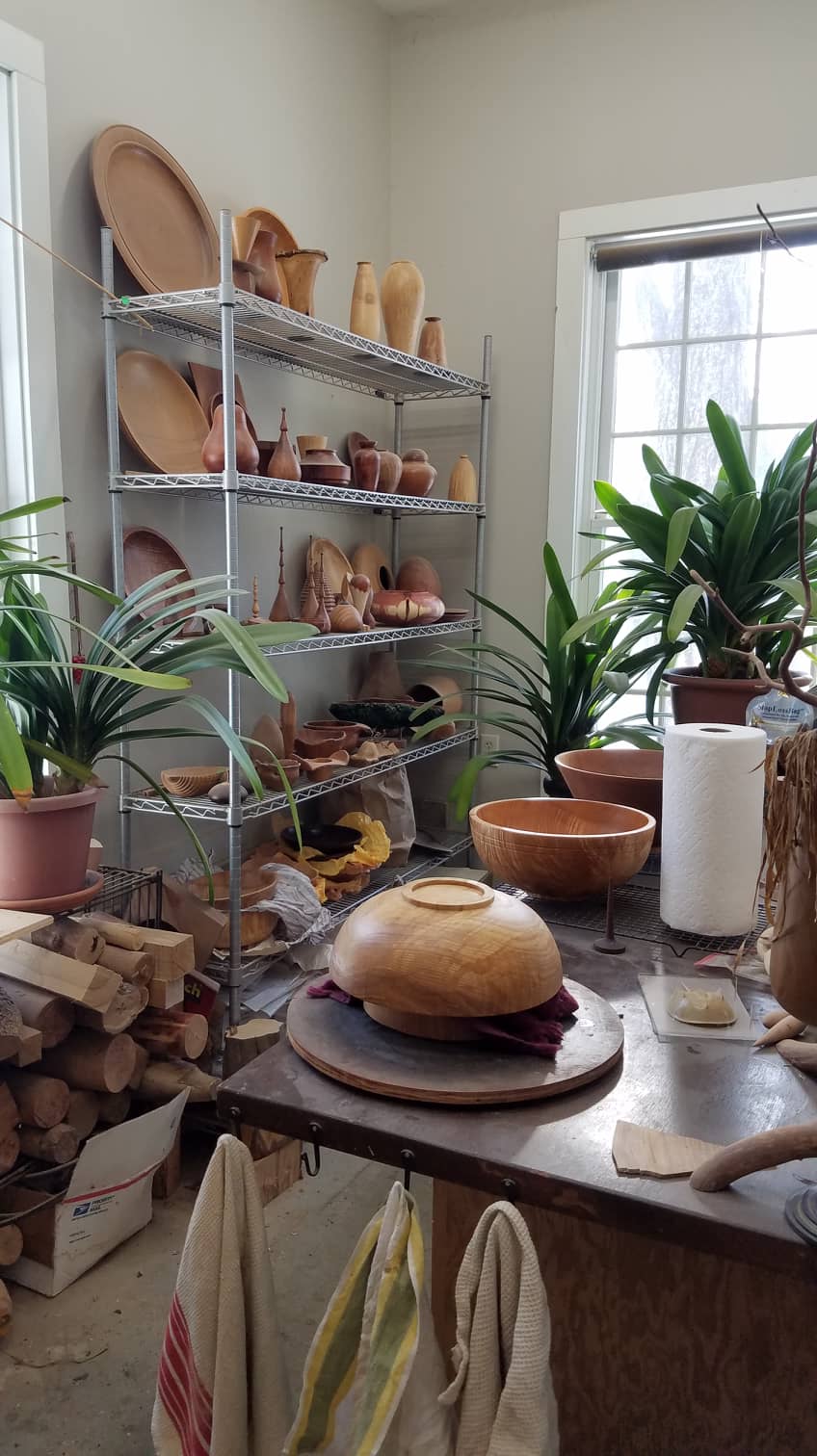
Other, more saddening histories are also contained in Heys’ pieces. Connecticut is no stranger to the loss of tree species due to blight: in the twentieth century alone, Dutch elm disease and chestnut blight have irreversibly changed New England forests. Since the emerald ash borer was first found in Connecticut in 2012, blighted and dying stands of ash trees have also become a common sight throughout the area.
When asked, Heys admits that he is aware of the ash blight when working with ash wood. “Because of the ash die-out, there’s much more of that wood available than there would be otherwise,” he says. “I know that when I make a piece of art, someone seeing it in four or five decades may say, ‘This is ash wood! We used to have that.’”
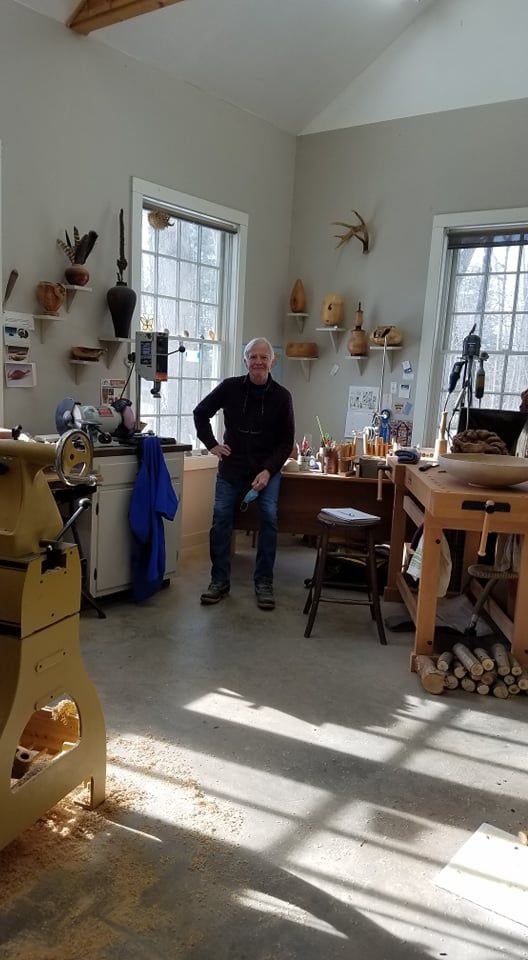
Heys tends to deny any artistic intent or statement in his work, instead calling it play. Nevertheless, there is an undeniable thread of sentiment, of concern, of interest through his pieces. His interest in the life and history of his material, though he dismisses it as simple curiosity, shapes his pieces as much as the physical tool of the lathe does, and raises them to a level of artistic and personal expression. Heys’ art serves as a beautiful and functional memorial to the lives of trees.
“It’s fascinating to cut into a tree and to see a part of its life,” he says. “Trees keep a better record of their lives than anything else.”
-
Richard Heys welcomes visitors interested in his art and in the techniques of woodturning to his studio. To learn more about his work, visit https://www.richardheyswoodturning.com/.
